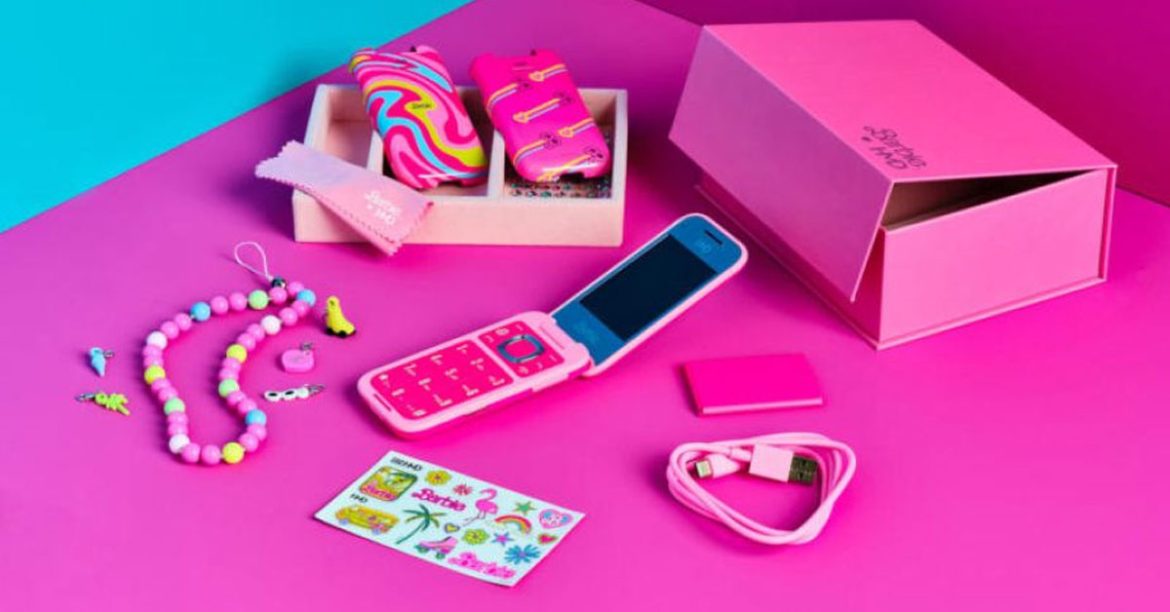- A Barbie-branded phone has been launched by HMD to encourage young people to reduce their smartphone usage.
- Some experts and parents argue that rather than limiting smartphone access, it’s better to teach children healthier and more controlled use of these devices, as they are an integral part of modern life.
- The Barbie phone reflects a trend of “digital detox” devices, with some schools and organizations supporting the use of simpler phones to help manage digital engagement, although critics question the effectiveness and motives behind this approach.
HMD Global (Nokia) has launched a new Barie-themed flip phone claiming it is designed to help young people take a break from their smartphones.
The phone is bright pink and very basic. It lacks a front camera, offers only one game, and provides minimal internet access. The manufacturer, HMD, which also produces Nokia phones, says it caters to a rising trend of individuals seeking to reduce their “digital footprint.”
However, some critics argue that a better approach would be to educate people on healthier and more controlled smartphone usage. Many parents and activists are advocating for restrictions on children’s smartphone usage or even a complete ban on these devices.
Their concerns include the potential for reduced attention spans in children and exposure to harmful or illegal content. In response, some schools have taken action; for instance, Eton College, a well-known private school in the UK, has provided some students with “brick” phones—simple devices that only allow texting and calling. The school aims to balance the benefits and drawbacks of technology in education.
In our fast-paced digital world, it can often feel like the online buzz never stops. This phone encourages you to ditch your smartphone in times when you just want less browsing and more fun, all with the help of a true cultural icon, Barbie. -Lars Silberbauer, chief marketing officer for HMD
Also Read:
Is Global Warming Responsible for Monsoon Brides in Pakistan?
Recently, mobile network EE advised parents not to give smartphones to children under 11. Lars Silberbauer, a senior executive at HMD, notes that the Barbie phone aligns with a growing trend, especially in the US and now in Europe, where people desire less constant digital engagement.
Despite this, some question the purity of Mr. Silberbauer’s intentions, especially since he admitted he would like to add a messaging platform like WhatsApp to the Barbie phone. After testing the phone for a day, it proved effective as a “digital detox” device due to its limited features. The phone is a mirror-fronted flip model without an app store or touch screen, meaning no access to social media and only basic SMS messaging.
Using the phone meant returning to an older style of communication, which, despite being slower, led to more phone calls. The phone features only the classic Nokia game Snake, albeit rebranded as Malibu Snake in pink, which, while nostalgic, has limited appeal. The device drew considerable attention, especially from young women and girls in Glasgow city center.
There is a risk that parents might now face pressure from children to buy this Barbie-branded device, which costs £99 in the UK—double the price of a standard Nokia feature phone. There are many other basic phones available with similar functionality but without the Barbie branding.
Ben Wood, a phone expert with a collection of devices spanning years, suggests that while some people might buy the Barbie phone for fun, most are too dependent on their smartphones to use it for more than occasional digital detoxes. He notes a niche market for these “dumbphones,” with CCS Insight, his company, estimating sales of around 400,000 units in the UK this year.
Some experts believe that simply removing smartphones from children’s lives is not a real solution, given how integral these devices have become. Instead, they advocate for teaching children to use smartphones responsibly and safely. Pete Etchells, a psychology professor at Bath Spa University, emphasizes the importance of developing sustainable digital literacy skills in young people.
HMD is also working on another project, developing a new device with input from over 1,000 parents. Silberbauer admits that the future device may strike a balance between a basic phone and a smartphone. He explains, “The choice we want to offer is between a fully-featured smartphone and a device that helps people manage their digital habits more thoughtfully.”
